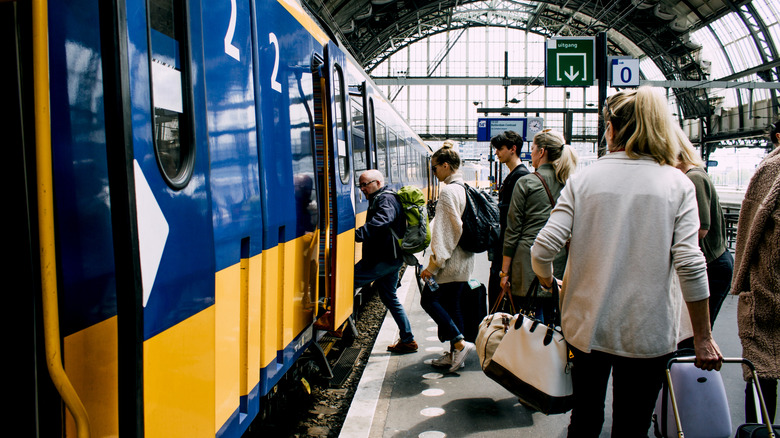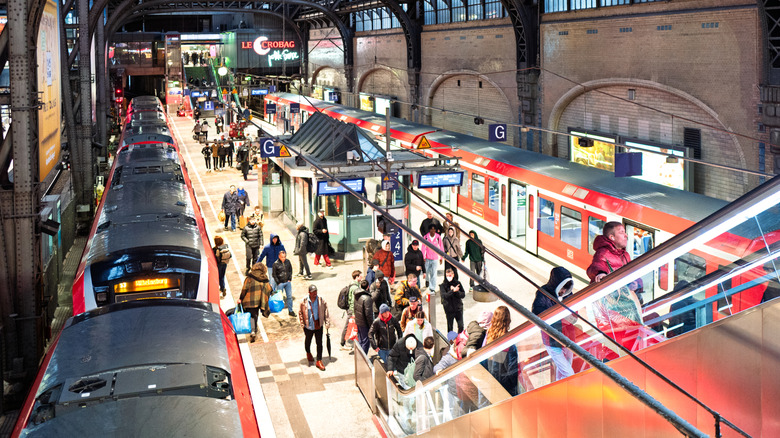Rick Steves Shares His Secret To Never Getting European Train Schedules Mixed Up While Traveling
Train travel in Europe is more accessible than ever. Europe's border-free Schengen Area means you can traverse many countries visa-free, paving the way for seamless rail travel. Plus, there are now European sleeper routes with comfy cabins that connect major cities throughout the continent. Even so, deciphering the multitude of symbols, letters, and numbers on European train tickets and departure boards can be confusing, especially when navigating the 24 official languages of the European Union.
Fortunately, travel pro Rick Steves has a useful hack for keeping your schedules straight, whether you're catching a tren, zug, or vlak. The trick is recognizing some common train symbols used throughout Europe. Some may seem obvious — dining cars are noted with a fork and knife, sleeping compartments have a small bed symbol, and a bike symbol means that the train car is the designated space to bring your wheels on board. But others are not so clear. What does a cross stand for? And what about the hammers? These are just some of the frequently used pictograms in Europe's train stations.
On his website, Steves writes, "Familiarize yourself with the symbols in schedules that indicate exceptions: Crossed hammers, for instance, mean the train goes only on workdays (daily except Sundays and holidays); a cross signifies that it runs only on Sundays and holidays." Knowing these icons will help you get to your destination easily.
Understanding the train symbols in Europe
Since 1997, Forum Train Europe has been meeting every year to consolidate and streamline the timetables across Europe's vast rail network, including standardized pictograms that transcend language differences. Rick Steves notes five main columns on boards all over the continent, with essential information like the "destination, major stops along the way, type of train, track number, and departure time." Knowing what you're looking for will help you get where you need to be. While most symbols are standardized, some countries have their quirks.
German trains are notoriously difficult to decipher, with lengthy Reddit threads devoted to understanding the country's seemingly arcane Deutsche Bahn service. The dreaded Teilungszug, or "split train," often catches travelers off guard, as part of the train detaches to continue to a different destination. Deutsche Bahn has a pictogram for that: two train ends with a line separating them. Sometimes, the board will show two trains with the same number and departure time heading to different destinations. Pay attention to which cars are heading to your destination. Furthermore, in Germany, a train icon on the departures board will also show the order of the cars (denoted by letters) and the class (1 for first or 2 for second).
When in doubt, Steves recommends trying to speak with workers at the information booths near departure boards or on the tracks to clear up any confusion and answer all your questions. If the station has self-service computers, you can likely find any info you need in multiple languages. Fortunately, Europe's railway companies also have apps that allow travelers to navigate their way through the rail system in English. Of course, the best way to ensure smooth travel is to allow plenty of time at the station, and to make train travel in Europe even easier, use Steves' brilliant luggage tip.

